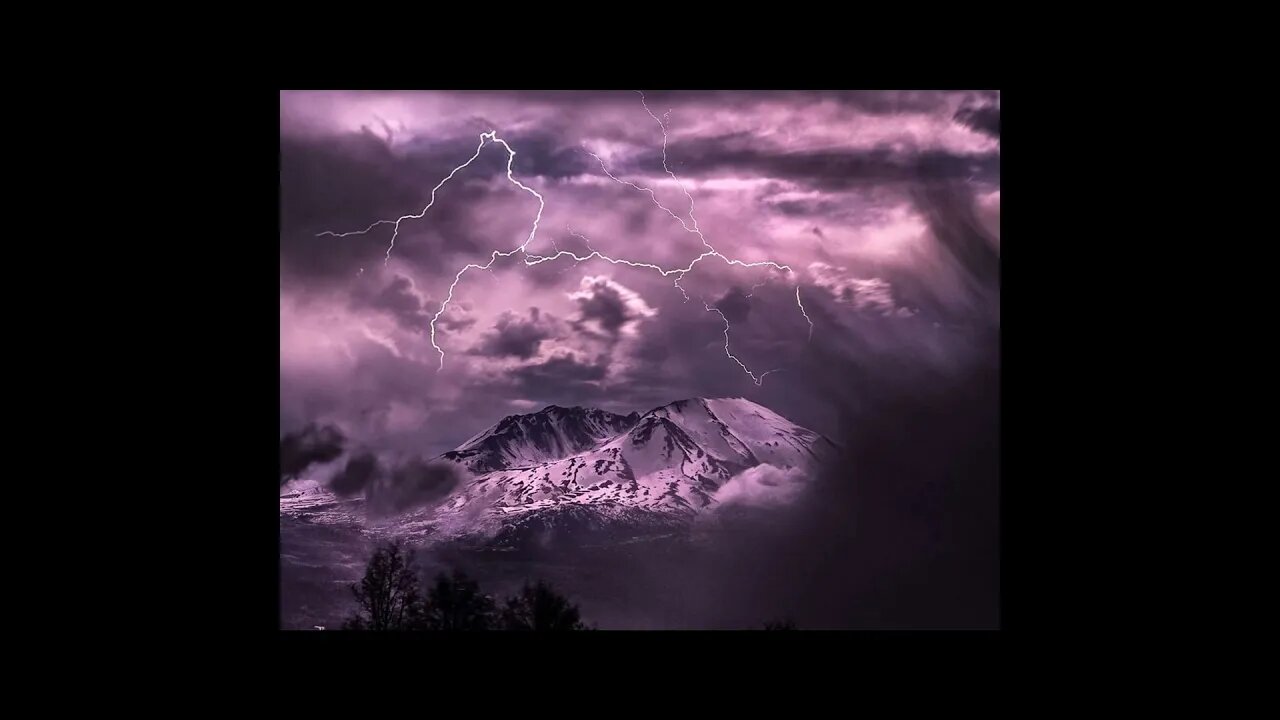Premium Only Content

Mt St Helens lit up with a Purple Flame (St Elmo's Fire) Thunderbeings 43rd Anniversary of Eruption
Mt St Helens lit up with a Purple Flame (St Elmo's Fire) Thunderbeings 43rd Anniversary of Eruption
If you would like to help us continue bringing these transmissions and teachings to the world you can either make a monthly pledge or one time donation to the links at http://eaglelovecondor.com Thank you all very much for your continued support. We couldn't be doing this work without you and your contributions...
Namaste 🙏🕊🦅
#mtsthelens
#thunderbeing
#lightning
#storm
#washington
#volcano
source:
Mathew Nichols Photography
mathewnicholsphotography.com
Mt St Helens lit up with a purple tint from the insane lightning storm I captured over it! The natural color really fits as this volcano is nothing short of majestic!! When I took a chance and went to Mt St Helens to chase thunderstorms, I had very low expectations. I didn't expect the volcano would even be visible due to low clouds, and I definitely didn't expect to actually get such an insane display of lightning!!
There were bolts dashing across the sky for hours, some striking the ground, some striking the mountain itself, and others crawling across the sky. Something about the bolts that would creep across the sky gave me chills.they seemed to last longer and the thunder that accompanied them was just as eerie.
At this moment I was feeling a little nervous, I could see the low cloud to the right of St Helens moving really fast, but I didnt want to miss any of the action. Then this creepy crawling bolt scattered across the sky and I knew I got the shot I wanted and quickly grabbed my gear and sat in the car. Literally within seconds that low cloud to the right moved in, completely covering the mountain and engulfing me entirely. All I could see was fog, then suddenly lightning began striking way too close for comfort. The wind was intense and the rain was coming down in sheets, I thankfully avoided being outside in the most dangerous part of the storm.
I was so glad I got the shot before this happened, but even more glad I listened to my gut and took cover from that incoming cloud, as it proved to be a very intense storm cloud that was full of unpredictable and close lightning strikes.
The cloud did quickly pass, and I was able to continue shooting for about a hour before the storms stopped all together. This was an experience I will never forget and will go down as one of my proudest moments as a photographer 📸🌩⚡️
We have had quite the active year for thunderstorms in Washington, which is very rare for the region! Any time there is a chance I just have to go see what I can get, as I hold these experiences dear to my heart, it always gives me a little taste of my home state of Kansas. Yesterday's storms were amazing to witness, and came just 2 days before I fly back home to see my family for 2 weeks 😍
1980 eruption of Mount St. Helens
A series of phreatic blasts occurred from the summit and escalated until a major explosive eruption took place on May 18, 1980, at 8:32 am. The eruption, which had a Volcanic Explosivity Index of 5, was the most significant to occur in the contiguous United States since the much smaller 1915 eruption of Lassen Peak in California.[2] It has often been declared the most disastrous volcanic eruption in U.S. history.
The eruption was preceded by a two-month series of earthquakes and steam-venting episodes caused by an injection of magma at shallow depth below the volcano that created a large bulge and a fracture system on the mountain's north slope. An earthquake at 8:32:11 am PDT (UTC−7) on Sunday, May 18, 1980,[3] caused the entire weakened north face to slide away, a sector collapse which was the largest subaerial landslide in recorded history.[4] This allowed the partly molten rock, rich in high-pressure gas and steam, to suddenly explode northward toward Spirit Lake in a hot mix of lava and pulverized older rock, overtaking the landslide. An eruption column rose 80,000 feet (24 km; 15 mi) into the atmosphere and deposited ash in 11 U.S. states[5] and various Canadian provinces.[6] At the same time, snow, ice, and several entire glaciers on the volcano melted, forming a series of large lahars (volcanic mudslides) that reached as far as the Columbia River, nearly 50 miles (80 km) to the southwest. Less severe outbursts continued into the next day, only to be followed by other large, but not as destructive, eruptions later that year. Thermal energy released during the eruption was equal to 26 megatons of TNT.[7]
-
 9:02
9:02
Millionaire Mentor
17 hours agoCNN Host Left SPEECHLESS After Stephen Miller SHREDS Her Narrative
7.35K17 -
 LIVE
LIVE
BEK TV
23 hours agoTrent Loos in the Morning - 8/29/2025
332 watching -
 LIVE
LIVE
Times Now World
3 hours agoLIVE News | “Diplomacy of Cannons Is Over” – Maduro Challenges Washington | Times Now World
1,411 watching -
 1:09:09
1:09:09
Dialogue works
1 day ago $0.76 earnedScott Ritter: NATO is FINISHED
6.42K4 -
 LIVE
LIVE
FyrBorne
12 hours ago🔴Warzone M&K Sniping: I Can Be Your Idol (For Sniping)
158 watching -
 LIVE
LIVE
The Real Tombliboos - Live Streaming
5 hours ago $0.17 earned🔴CHARITY DRIVE🔴12 HOURS🔴Extra Life Charity🔴#ExtraLife #extralife4kids - Round 1
57 watching -
 17:54
17:54
Dr Disrespect
20 hours agoDR DISRESPECT vs VAN DAMME in Hitman 3
91.5K11 -
 34:26
34:26
CarlCrusher
13 hours agoJake Paul's Crew vs Ancient Skinwalker Canyon
24.3K2 -
 16:07
16:07
Chris From The 740
1 day ago $1.13 earnedMy BIGGEST Problem with the Ruger RXM – FIXED by Liberty Build Co!
15.3K1 -
 13:29
13:29
Professor Gerdes Explains 🇺🇦
13 hours agoUS Deploys Warships to Venezuela's Coast: A Show of Force Against Putin's Ally
14.6K1